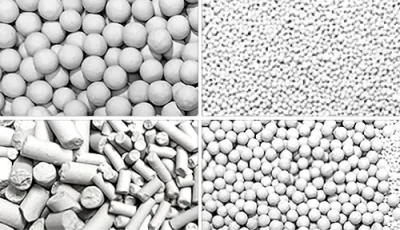All

Hydrogen & Renewable Fuels – Hengye Inc. Brochure
Hydrogen & Renewable Fuels Hydrogen is remarked as the fuel of the future because of the clean environment it produces when being used and the many resources that it can be...
read more

Oxygen Concentrator Sieves: A Comprehensive Guide
Oxygen concentrator sieves, such as molecular sieves, play a crucial role in separating nitrogen from ambient air to concentrate and deliver high-purity oxygen. These sieves have uniform pores that selectively adsorb...
read more

Zeolite Molecular Sieve: Guide to Adsorption and Catalysis
Zeolite molecular sieves are used in various industries, including natural gas purification, air separation processes, petroleum refining, and industrial drying. They play a critical role in removing impurities, moisture, and contaminants...
read more

Carbon Dioxide Removal Sieves: Process and Applications
Carbon dioxide removal sieves, such as molecular sieves, function by selectively adsorbing CO2 molecules from gas streams. These sieves provide a highly efficient method for removing CO2 from various industrial processes,...
read more

Molecular Sieve Desiccants: Key Applications and Benefits
Molecular sieve desiccants are widely used for drying gases and liquids in various industries, including natural gas refining and industrial drying. For procurement, Hengye Inc. offers a range of molecular sieve...
read more

The Importance of Adsorbents in Gas Purification
The best adsorbents in gas purification depend on the specific contaminants that need to be removed. Activated alumina and zeolite molecular sieves are commonly used adsorbents for gas purification applications, effectively...
read more

Activated Alumina: Desiccants, Adsorbents, and Water Treatment
Activated alumina is a highly porous form of aluminum oxide that is commonly used as a desiccant to remove moisture from air and gases in various industrial processes. It is also...
read more

Molecular Sieve for Oxygen Concentrator: Benefits and Usage Guide
Molecular sieve, particularly 13X zeolite, is commonly utilized in oxygen concentrators to adsorb nitrogen from ambient air, allowing the concentrated oxygen to be collected and utilized for medical or industrial purposes....
read more
